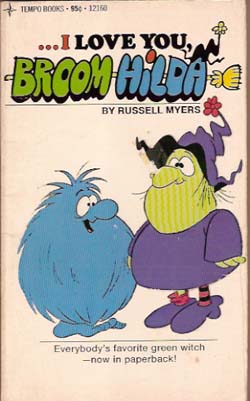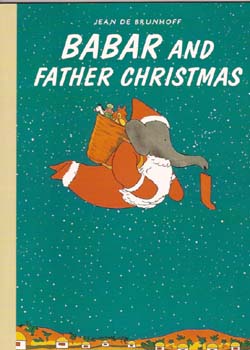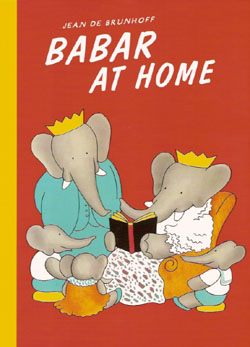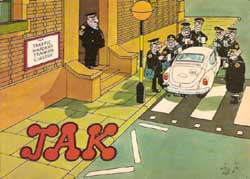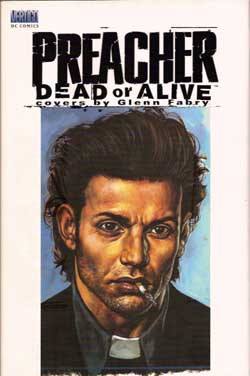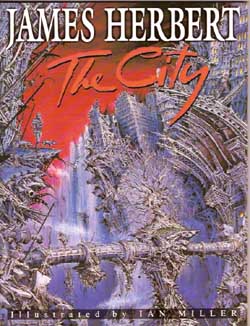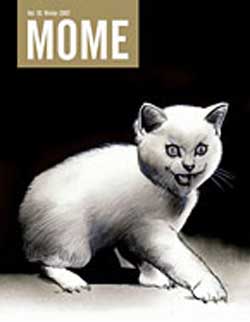FAVORITE ADVENTURES 1931-1990
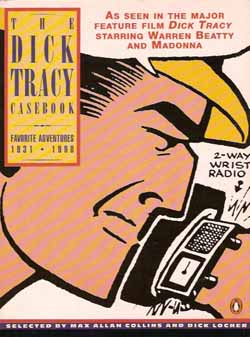
By Chester Gould, selected by Max Allan Collins and Dick Locher (Penguin)
ISBN: 978-0-14014-568-7
All in all comics have a pretty good track record on creating household names. We could play the game of picking the most well-known fictional characters on Earth (usually topped by Sherlock Holmes, Mickey Mouse, Superman and Tarzan) and in that list you’ll find Batman, Popeye, Blondie, Charlie Brown, Tintin, Spider-Man, Garfield, and not so much now – but once – Dick Tracy.
At the height of the Great Depression cartoonist Chester Gould was looking for strip ideas. The story goes that as a decent guy incensed by the exploits of gangsters (like Al Capone who monopolised the front pages of contemporary newspapers) he settled upon the only way a normal man could fight thugs: Passion and Public Opinion. Raised in Oklahoma, Gould was a Chicago resident and hated seeing his home town in the grip of such wicked men, with too many honest citizens beguiled by the gangsters’ charisma.
He decided to pictorially get it off his chest with a procedural crime thriller that championed the ordinary cops who protected civilisation. He took “Plainclothes Tracy†to legendary newspaperman and strips Svengali Captain Joseph Patterson, whose golden touch had blessed such strips as Gasoline Alley, The Gumps, Little Orphan Annie, Winnie Winkle, Smilin’ Jack, Moon Mullins and Terry and the Pirates among others. Casting his gifted eye on the work, Patterson renamed the hero Dick Tracy and revised his love interest into steady girlfriend Tess Truehart.
The series launched on October 4th 1931 through Patterson’s Chicago Tribune Syndicate and became a huge hit, with all the attendant media and merchandising hoopla that follows. Amidst the toys, games, movies, serials, animated features, TV shows et al, the strip soldiered on, influencing generations of creators and entertaining millions of fans. Recently IDW began reprinting the series – I’ll review those in greater depth when I eventually get my hands on them – but if you’ve never seen the original legend in action this collection, released to accompany the Warren Beatty movie in 1990 (and still readily available), is a great introduction.
Selected by Max Allen Collins and Dick Locher, who worked on the strip after Gould retired, it presents complete adventures from each decade of the strip’s existence (if the proposed sequel ever gets out of the courts and into production maybe a revised edition could cover the intervening years),and gives a grand overview of the development from radical ultra-violent adventure to forensic Police Procedural through increasingly fantastical science fiction and finally back-to-basics cop thriller under Collins’ own script tenure.
From the 1930s comes the memorable and uncharacteristic ‘The Hotel Murders’ (9th March – 27th April, 1936) as the determined cop solves a genuine mystery with a sympathetic antagonist instead of the usual unmitigated, unrepentant outlaw. Whodunits with clues, false trails and tests of wits were counter-productive in a slam-bang, daily strip with a large cast and soap-opera construction, but this necessarily short tale follows all the ground rules as Tracy, adopted boy side-kick Junior, special agent Jim Trailer and the boys on the force track down the killer of a notorious gambler.
The best case of the 1940s – and for many the best ever – was ‘The Brow’ (22nd May – 26th September, 1944) in which the team have to track down a ruthless and brilliant Nazi spy. As my own personal favourite I’m doing you all the favour of saying no more about this breathtaking yarn, and you’ll thank me for it, but I will say that this is a complete reprinting, as others have been edited for violence and one edition simply left out every Sunday instalment – which is my definition of brutal treatment.
By the 1950s Gould was at his creative peak. ‘Crewy Lou’ (22nd April – 4th November, 1951) and ‘Model’ (23rd January – 27th March, 1952) are perfect examples of the range of his abilities. The first is an epic of little crimes and criminals escalating into major menaces whilst the latter is another short shocker with the conservative Gould showing that social ills could still move him to action in a tale of juvenile delinquency as Junior grows into a teenager and experiences his first love affair.
As with many creators in it for the long haul the revolutionary 1960s were a harsh time for established cartoonists. Along with Milton Caniff’s Steve Canyon, Dick Tracy especially foundered in a social climate of radical change where the popular slogans included “Never trust anybody over 21†and “Smash the Establishmentâ€. The strip’s momentum faltered, perhaps as much from the move towards science fiction (Tracy moved into space and the character Moon Maid was introduced) as any old-fashioned attitudes.
In the era when strip proportions had begun to diminish as papers put advertising space above feature clarity, his artwork had attained dizzying levels of creativity: mesmerising, nigh-abstract concoctions of black and white that grabbed the eye no matter what size editors printed it. ‘Spots’ (3rd August – 30th November) 1960 comes from just before the worst excesses, but still displays the stark, chiaroscurist mastery in a terse thriller that shows the fundamental secret of Tracy’s success and longevity – Hot Pursuit wedded to Grim Irony.
The 1970s are represented by ‘Big Boy’s Open Contract’ (12th June – 30th December 1978) by Max Allen Collins and Rick Fletcher. Although he retired in 1977, Gould still consulted with the new creative team, and this third outing for the new guys saw the long awaited return of Big Boy, a thinly disguised Capone analogue Tracy had sent to prison at the very start of his career, whose last try for revenge tragically cost the hero a loved one and forever changed the strip.
The final tale representing the 1980s is ‘The Man of a Million Faces’ (October 5th 1987 – April 10th 1988) by Collins and Dick Locher, like Fletcher an art assistant to Gould who took up the master’s mantle. Despite the simply unimaginable variety of crimes and criminals Tracy has brought to book, this sneaky story of a bank robber and his perfect gimmick proves that sometimes the back to basics approach leads to the best results.
Dick Tracy is a milestone strip that has influenced all popular fiction, not simply comics. Baroque villains, outrageous crimes and fiendish death-traps pollinated the work of numerous strips such as Batman, but his studied use – and startlingly accurate predictions – of crime fighting technology and techniques gave the world a taste of cop thrillers, police procedurals and forensic mysteries such as CSI.
This is a fantastically readable strip and this chronological Primer is a wonderful way to ease yourself into his stark, no-nonsense, Tough-love, Hard Justice world.
© 1990 Tribune Media Services, Inc. All Rights Reserved.



